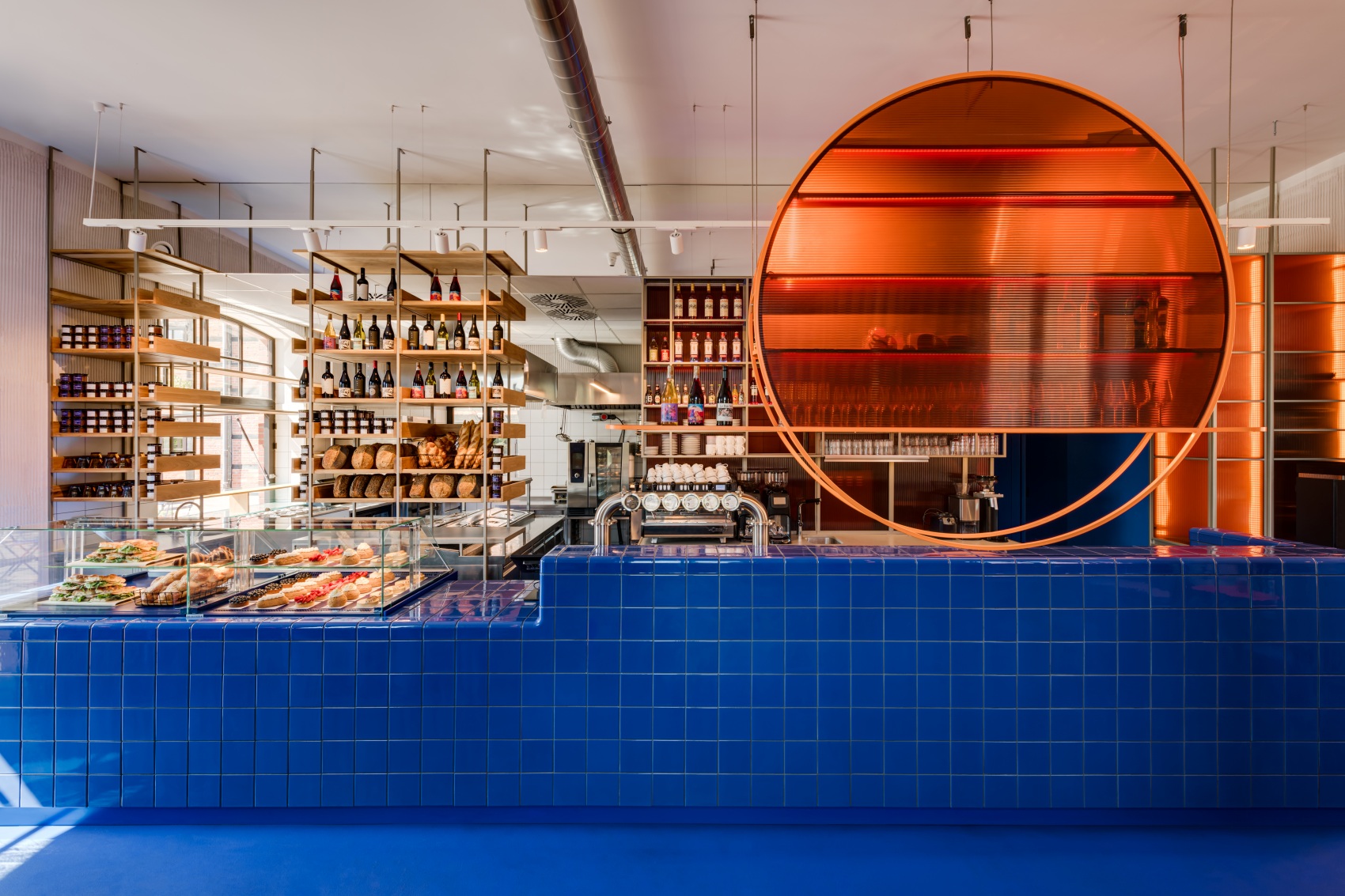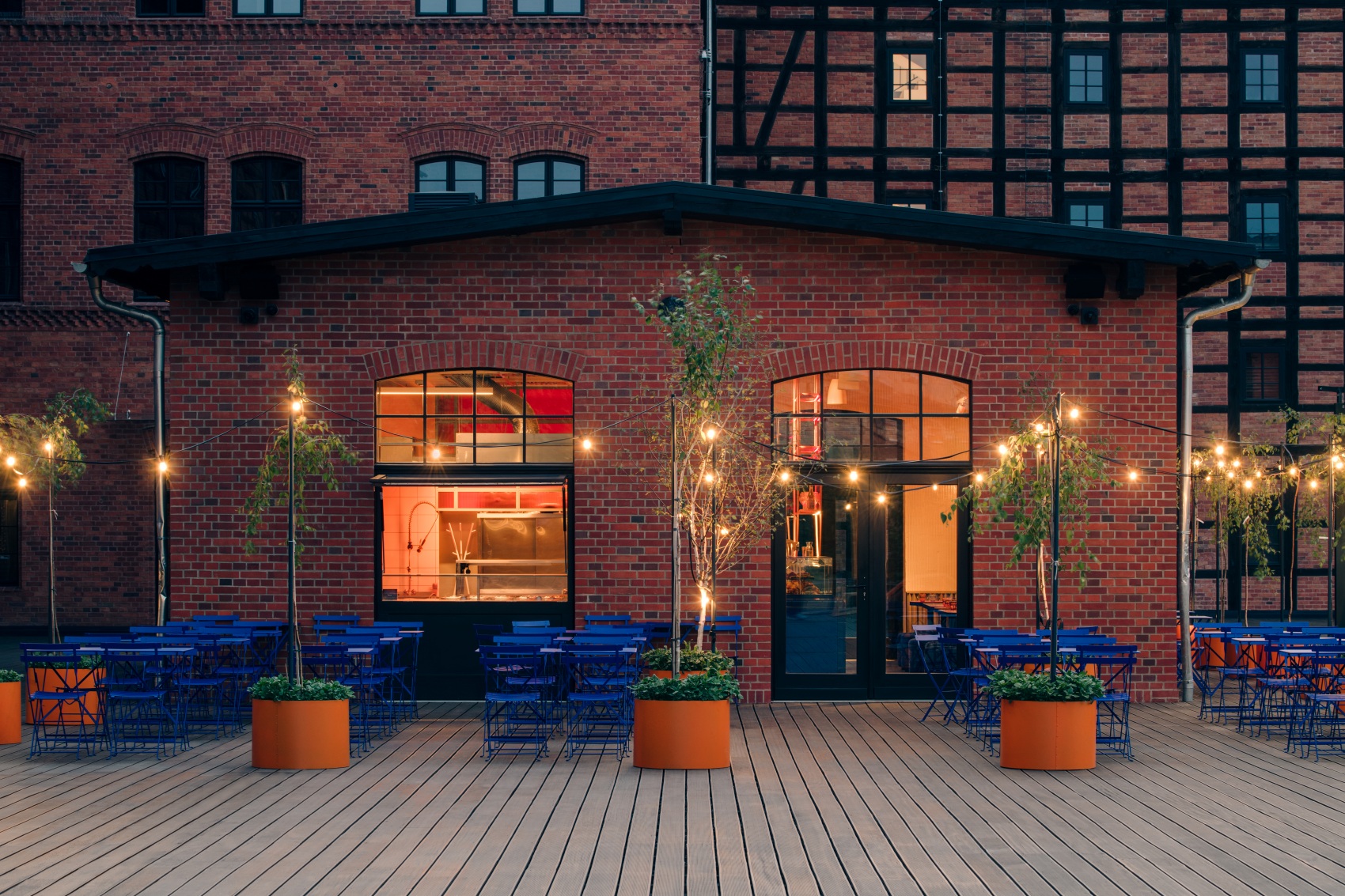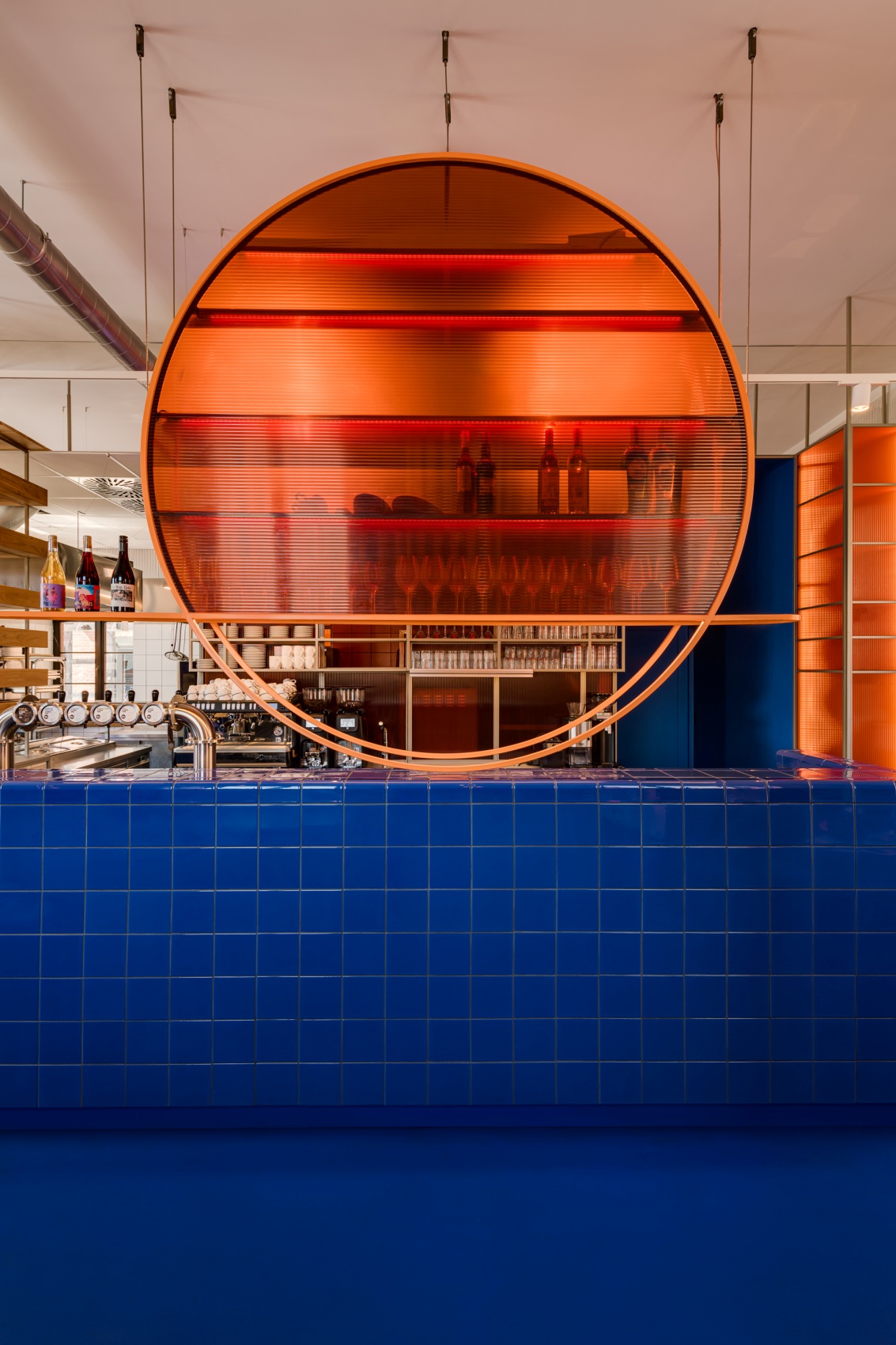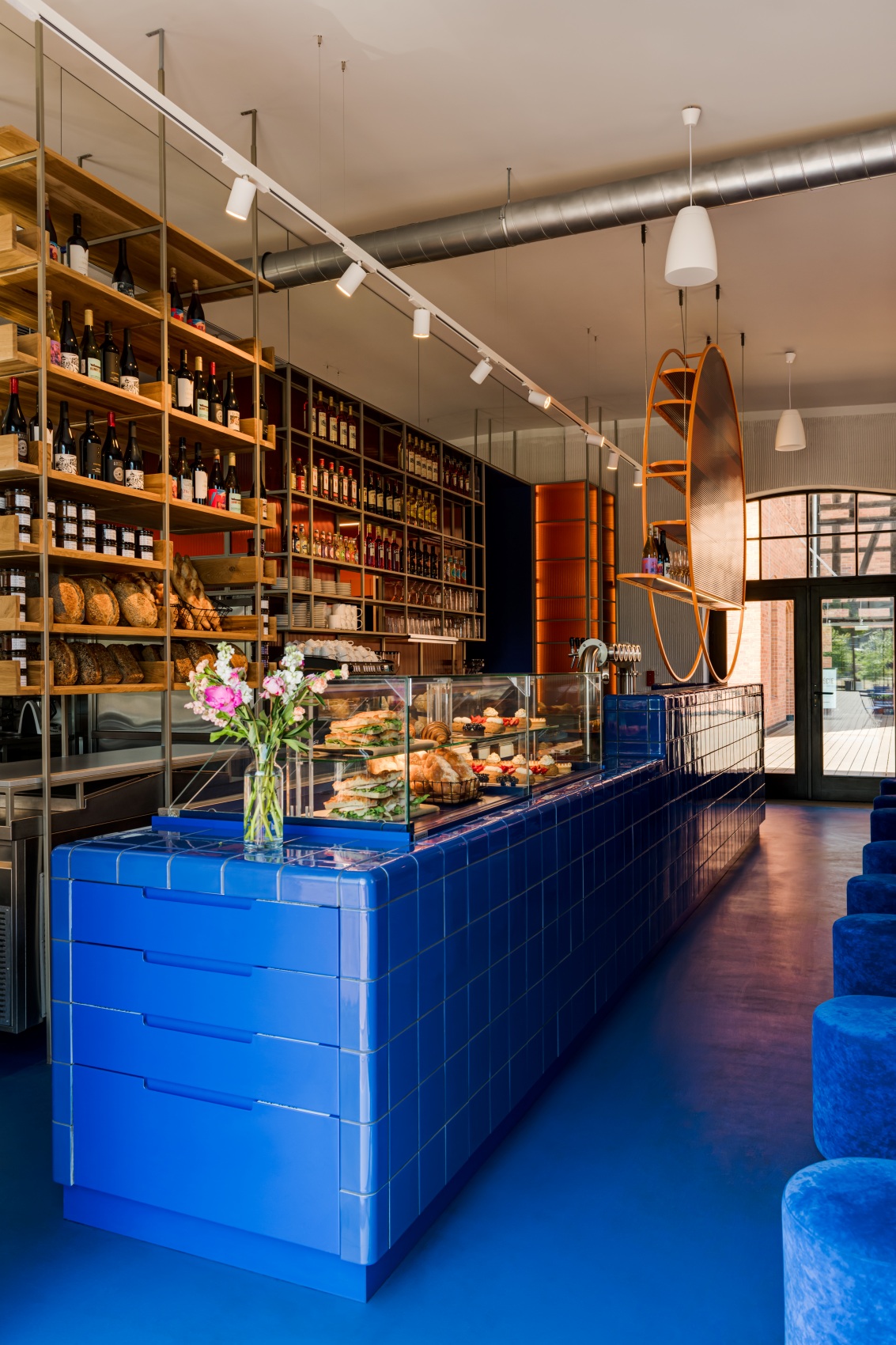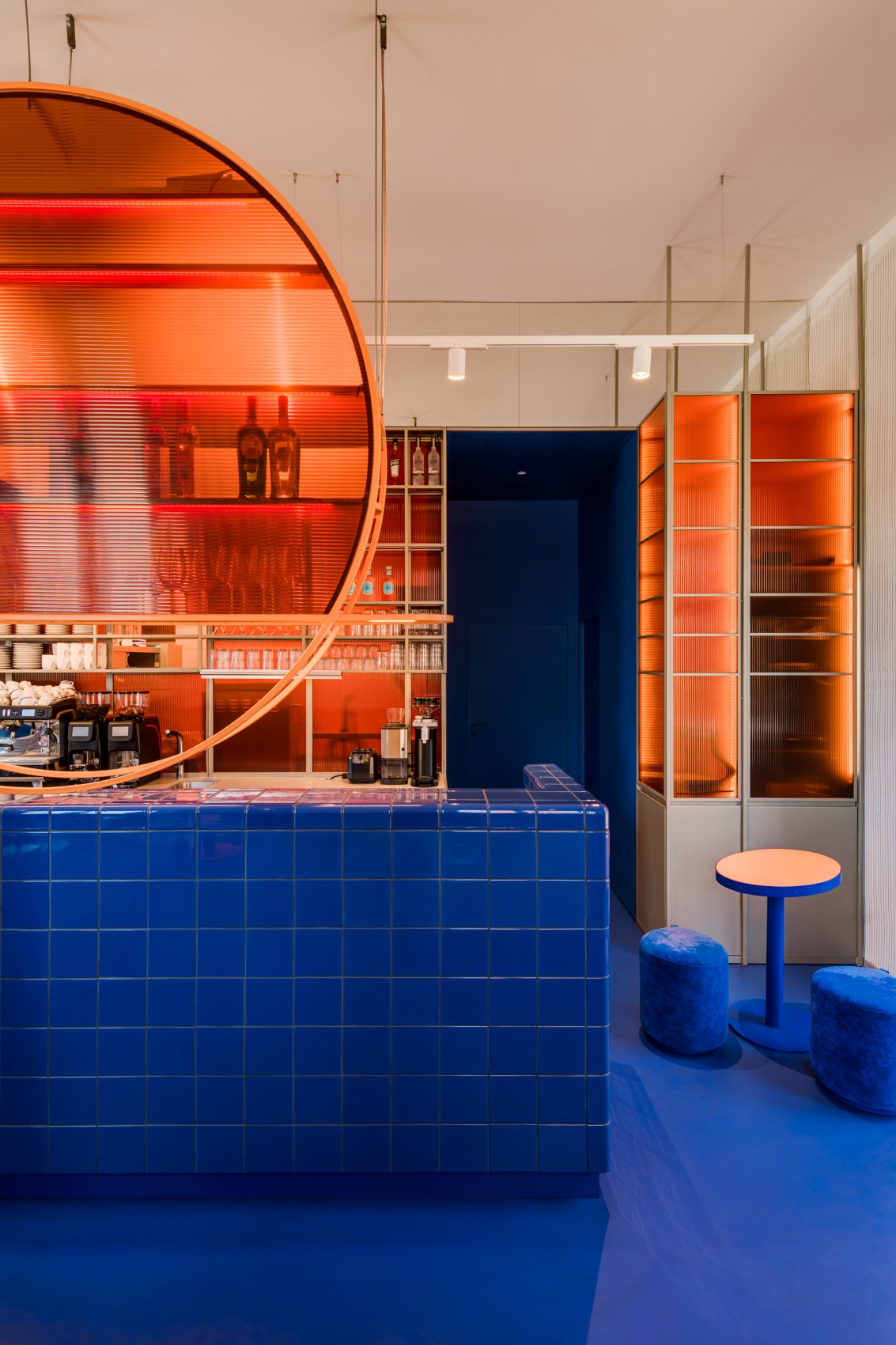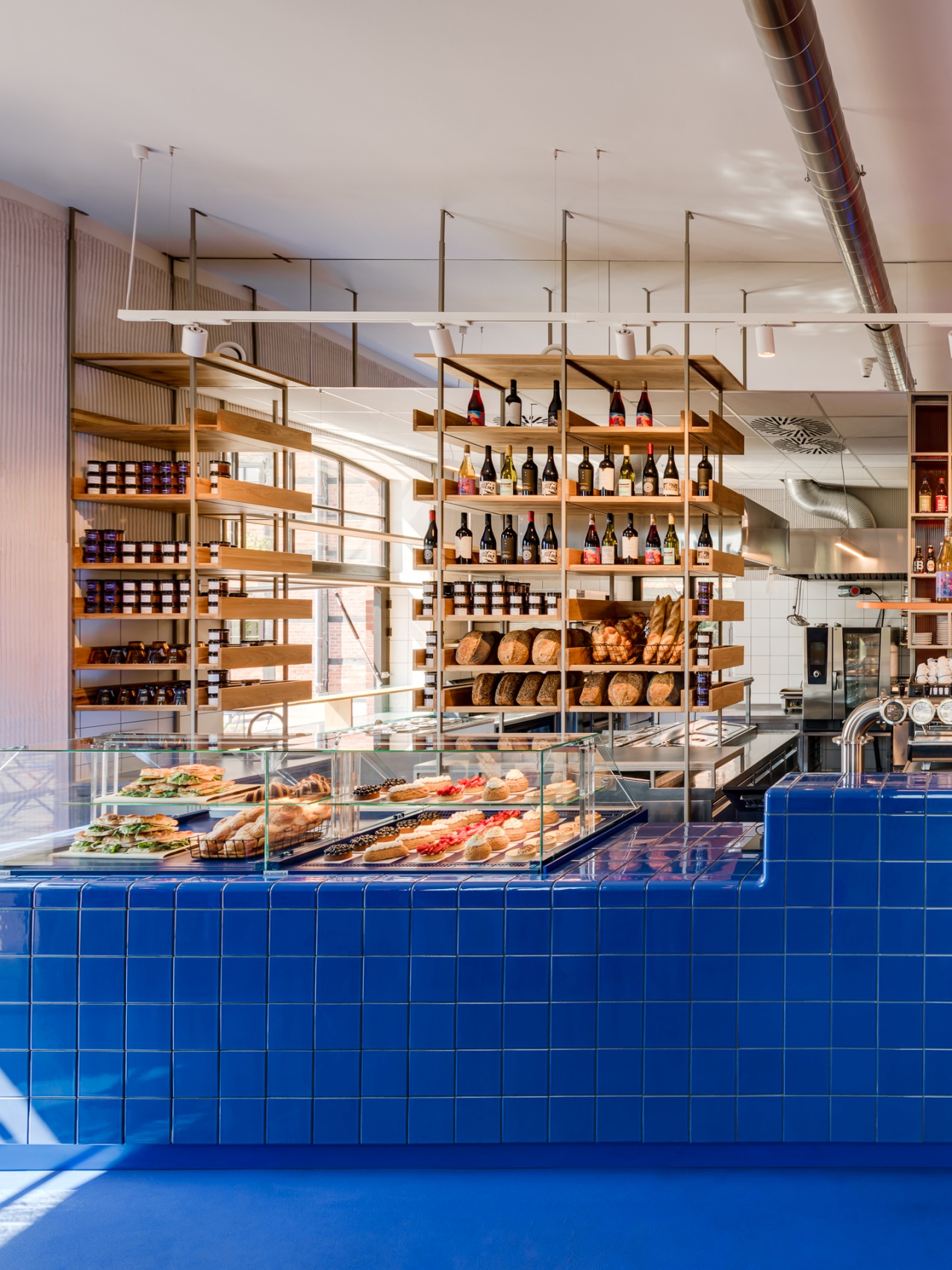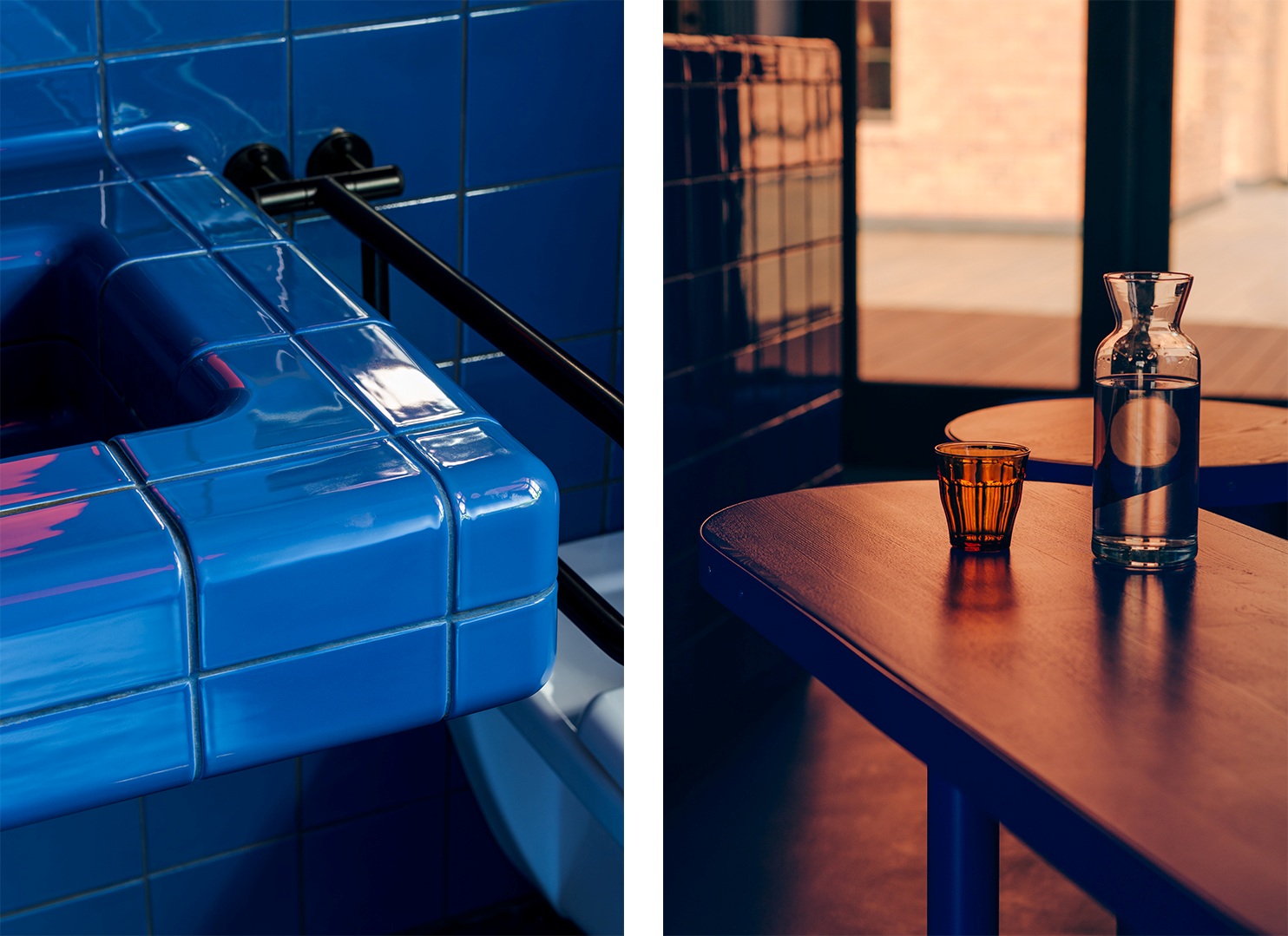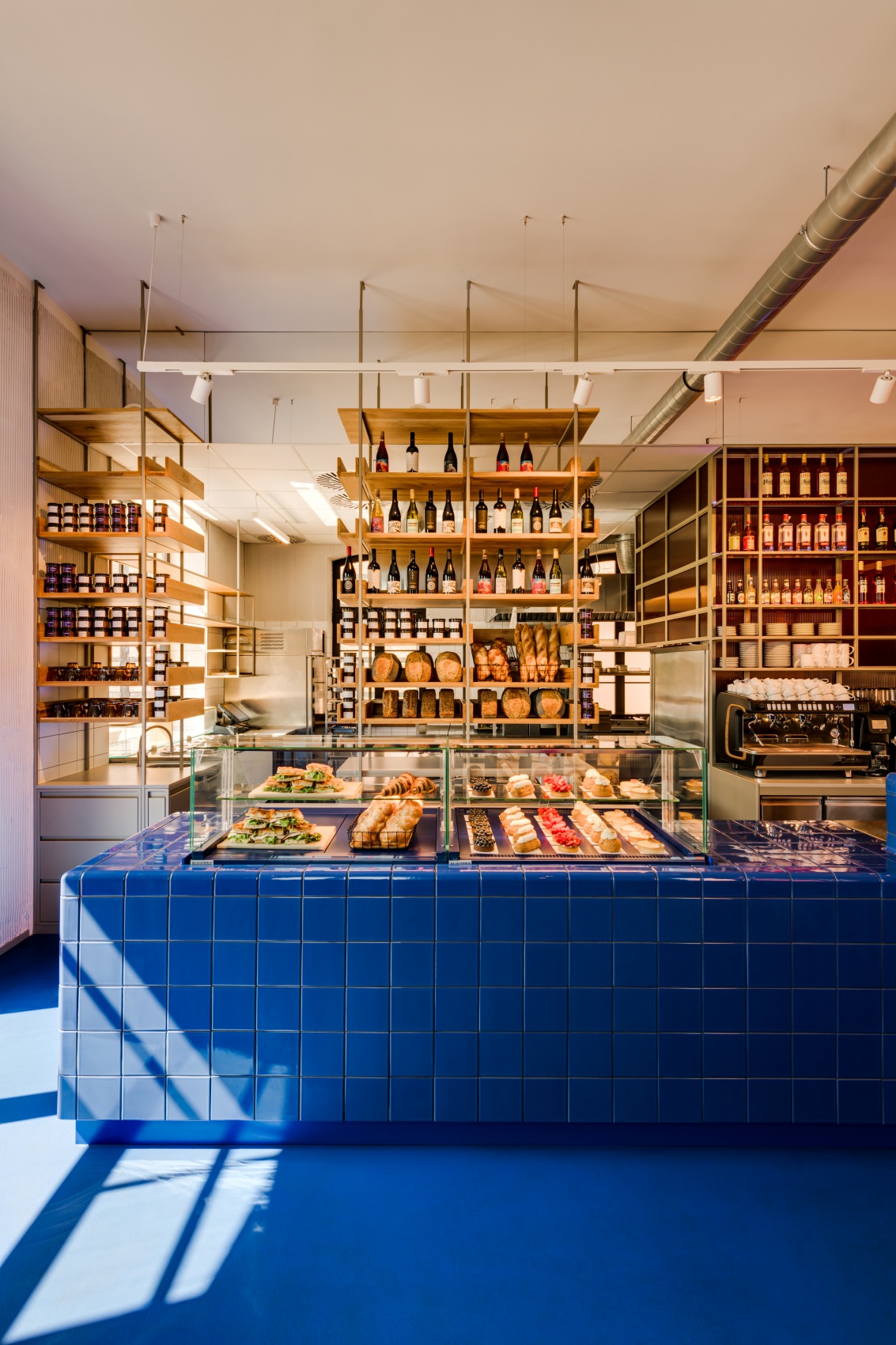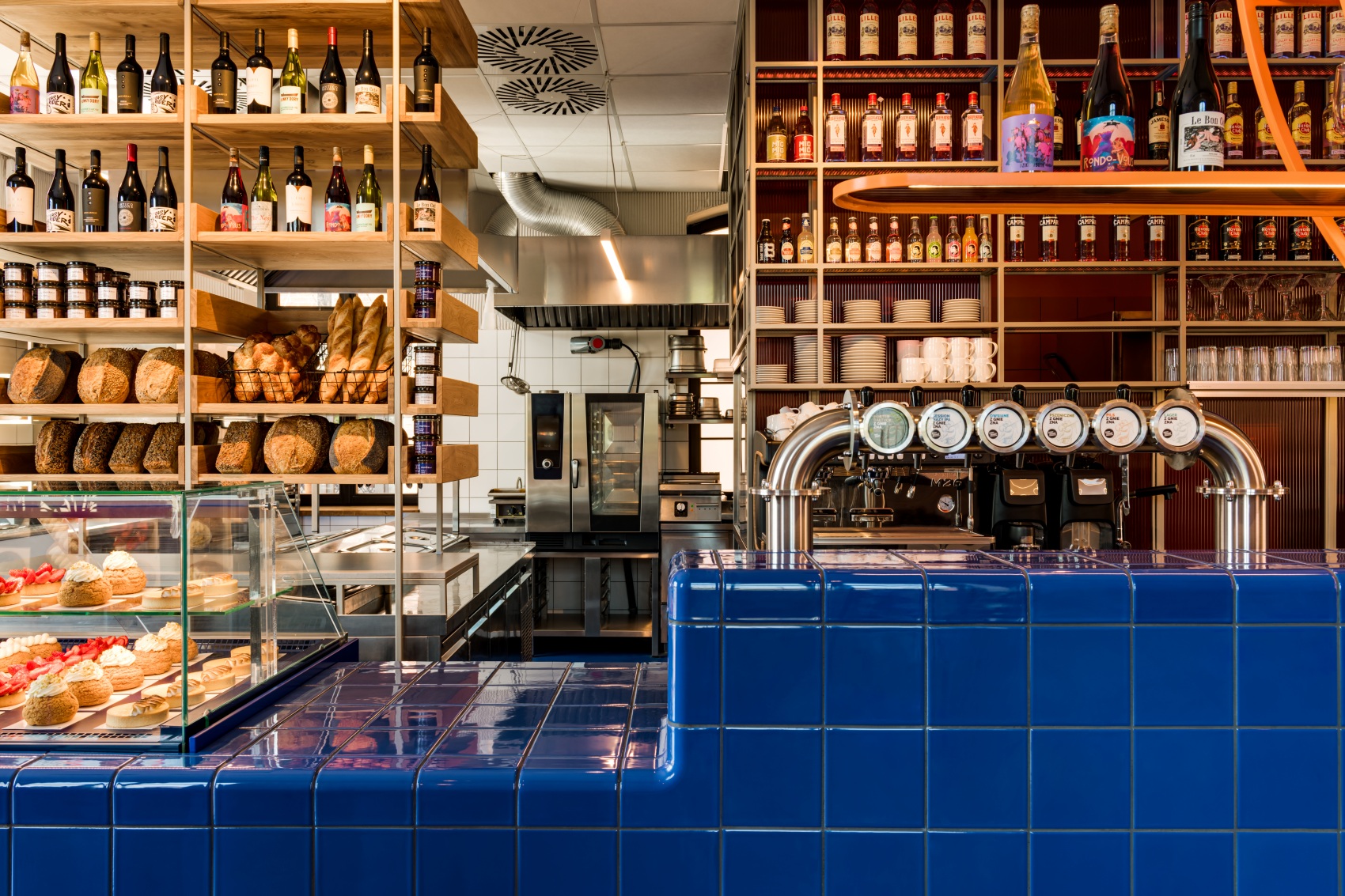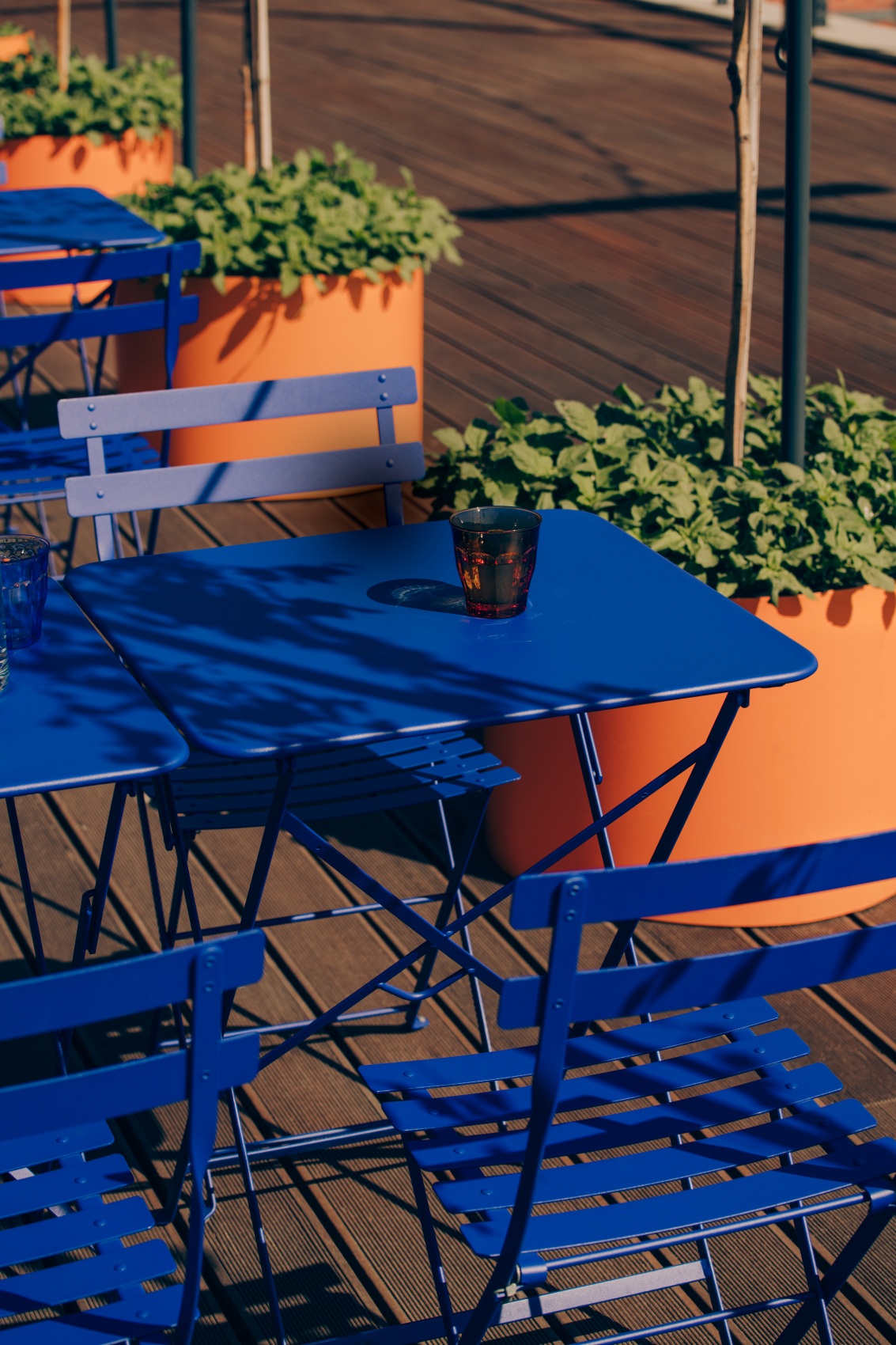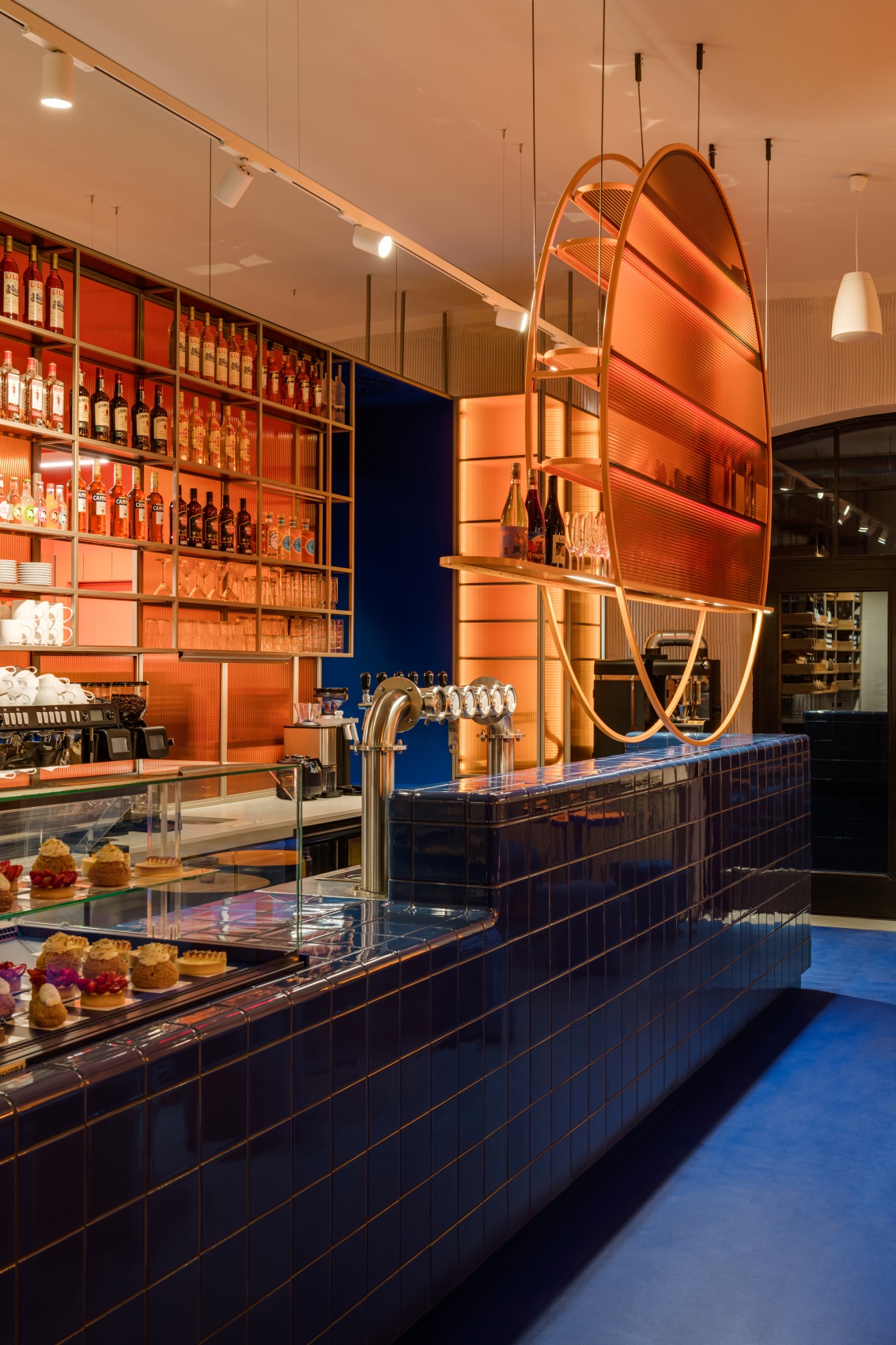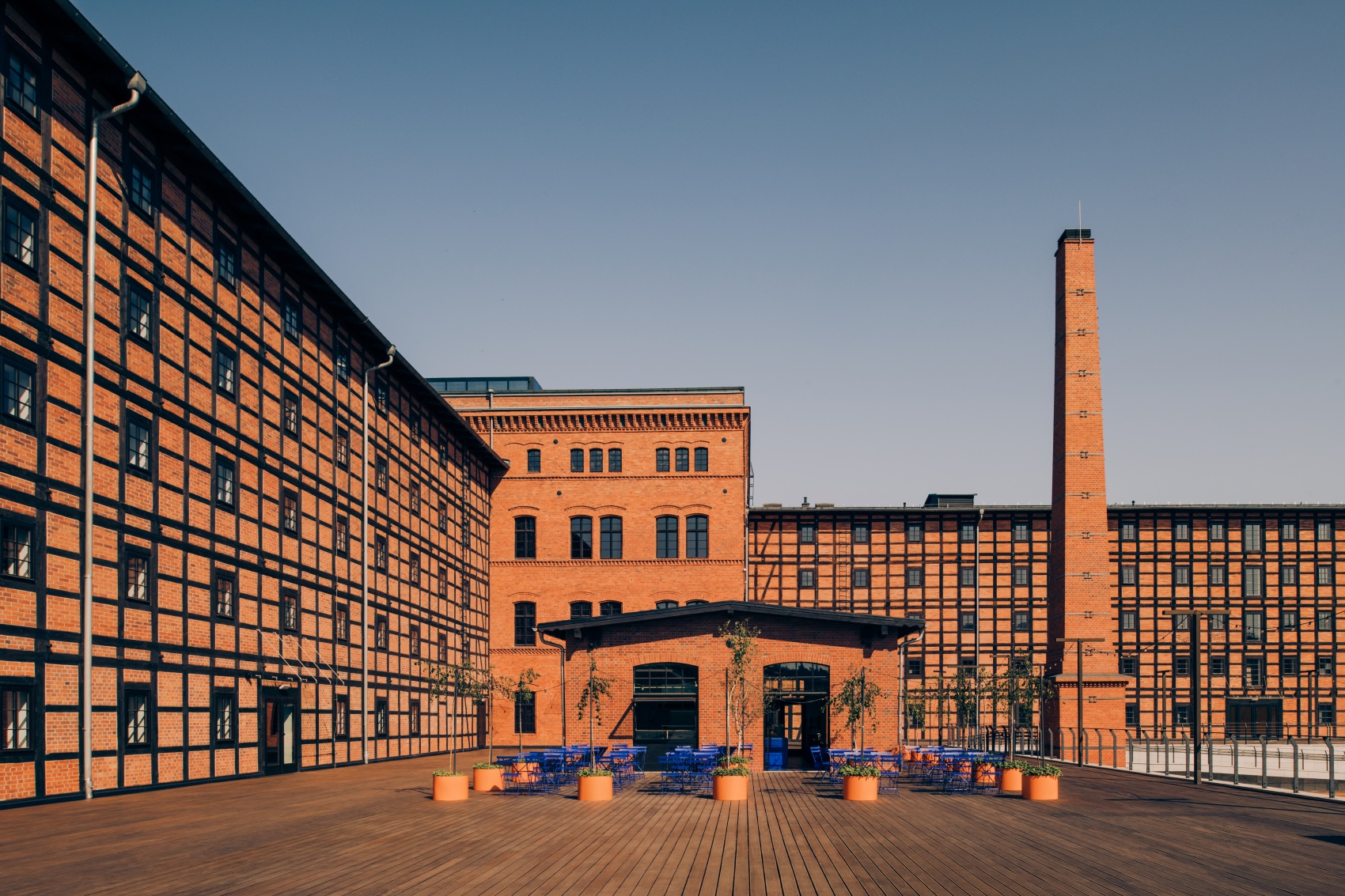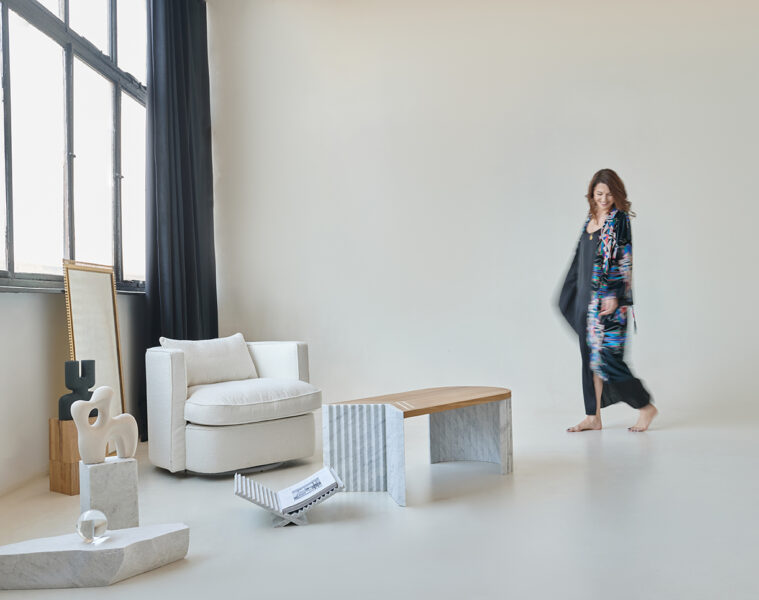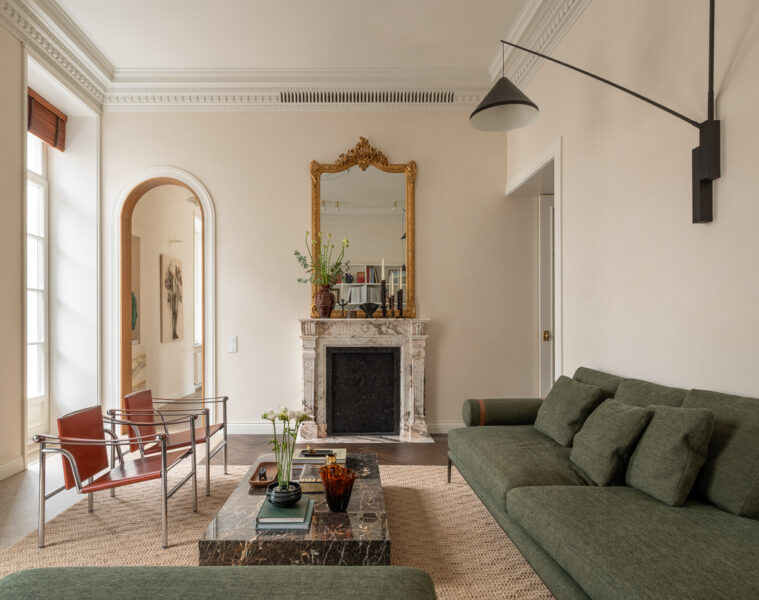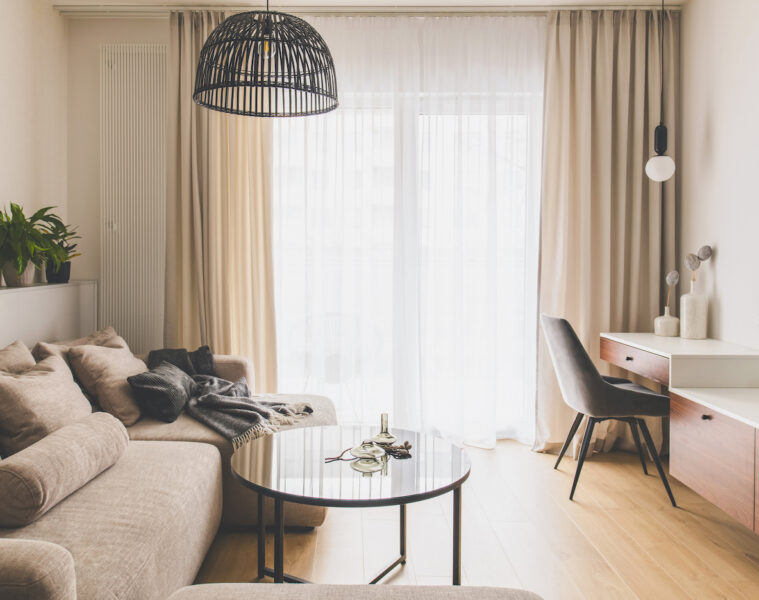We like places full of energy. This is what we have managed to create in Bydgoszcz, where Klubopiekarnia Woda operates. Its interior was designed by architects from the Znamy się studio, with Paweł Tatara also participating in the design work
Klubopiekarnia Woda was opened in a former boiler room within the historic Rothera Mills complex on Młyńska Island in Bydgoszcz. This is an attractive location, which today also attracts residents because of the cultural events organised on the island. In addition to its recreational function, the island is closely linked to the water transport of grain and the production of flour
We wanted to emphasise this importance in the interior. That is why we decided on a total colour treatment,” describe the architects
The floor, bar and furnishings are cobalt blue. This is a symbolic reference to the water that ‘pours in’ through this colour. The premises are divided in half by a streamlined bar, which intuitively suggests how to move around inside
The Rothera Mills complex consists of a grain granary building, a flour mill and a central section where the old mill was located. It was used to produce flour, where milling, cooling, sifting, packing and then transporting the finished product to the granary took place. Millstones with characteristic grooves were used for milling
When designing the interior of Klubopiekarnia Woda, the architects wanted to refer to the flour production process. Upon entering the premises, one notices the division of the space into a customer area and a technology area. An open kitchen was created here with equipment and steel elements alluding to the machines used in flour production, while the clear vertical grooves in the structure of the plaster are intended to evoke associations with millstones and the traces of milled grain spread by hopper-boy machines. Thanks to open technology, visitors to the venue can experience baking at every stage of production
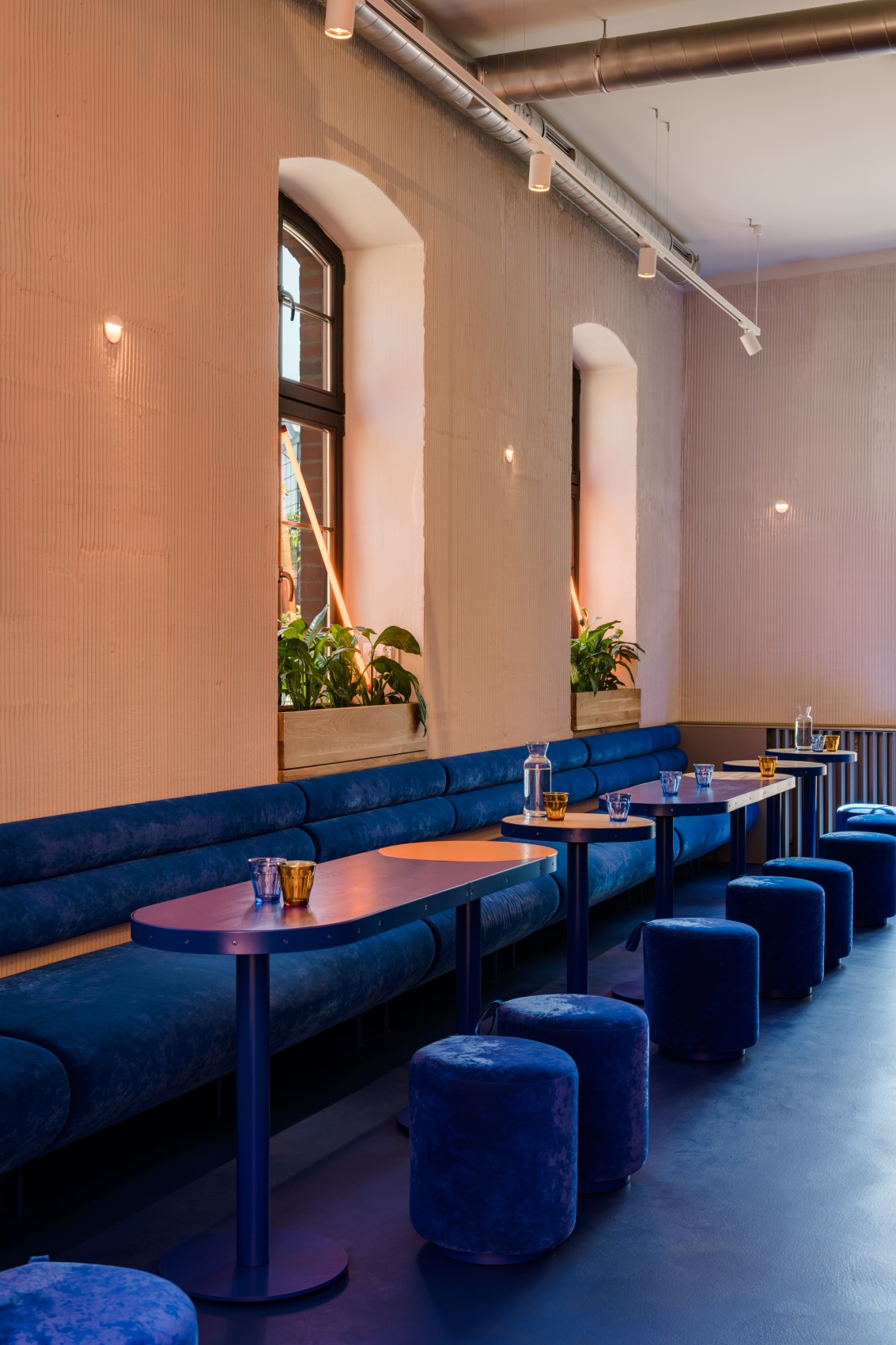
The Water Club Bakery is 78 sq m in size. The premises have a different function during the day and a different function at night. Two opposing colours predominate here, the aforementioned cobalt and orange. The former is associated with water, austerity, flow and refers to the ‘daytime’ function of the bakery. Orange, on the other hand, symbolises the setting sun, the beginning of the evening, fun, warmth and sweetness. In the evening, as the sun sets, the venue changes its function and becomes a club
Warm lights prevail, so the cold cobalt changes its colour, just as the surface of the water changes against the backdrop of the setting sun, the architects add at the end
Photos: ONI Studio
Authors of the project: we know each other(www.znamysie.com) and architect Paweł Tatara
Read also: Restaurant | Interiors | Bydgoszcz | Eclecticism | Detail | whiteMAD on Instagram

